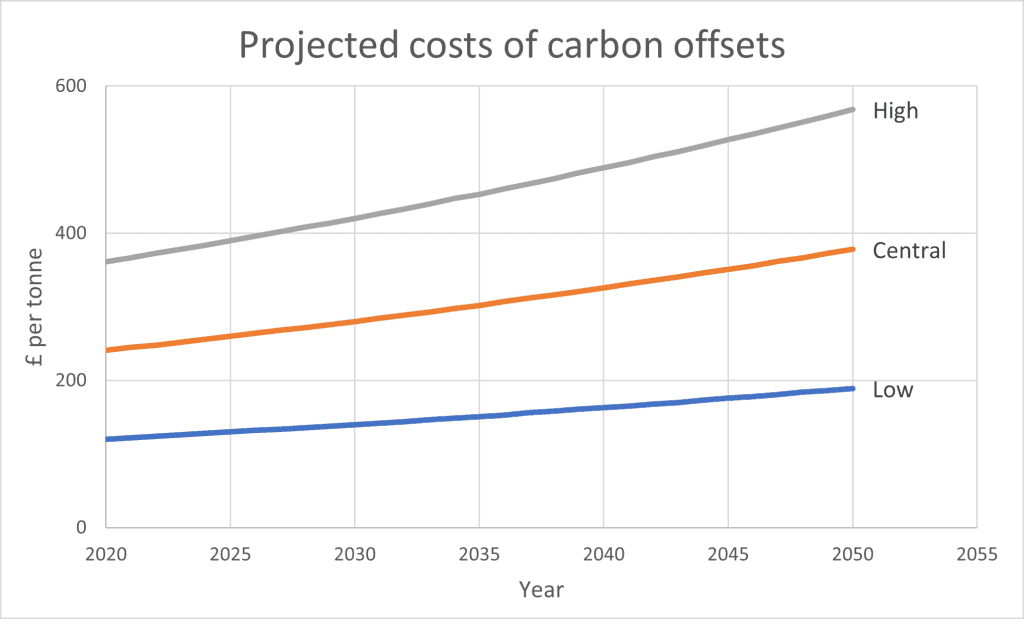 Over the past year, we’ve had some SHIFT landlords asking about internal carbon pricing and how it can be used to help decarbonise social housing. We’ve done the research for you and summarised below.
Over the past year, we’ve had some SHIFT landlords asking about internal carbon pricing and how it can be used to help decarbonise social housing. We’ve done the research for you and summarised below.
What is carbon pricing?
Carbon pricing can be used to recognise forthcoming costs of climate change and adverse effects of carbon emissions. It is a cost applied to emissions of greenhouse gases to encourage polluters to reduce emissions. Government’s implement external carbon pricing through taxes, emissions trading systems (for large, global emitters) or the purchase of carbon offsets.
Internal carbon pricing
Internal carbon pricing is calculated from an assumed cost per tonne of carbon emissions, meaning these emissions are included as a cost in profit-and-loss statements. Organisations can also use internal carbon pricing to understand exposure to financial risks/costs, guide business decisions/strategies and to drive decarbonisation. For building owners specifically, internal carbon pricing may support retrofit plans and energy efficiency improvements in these properties. Internal carbon pricing is an exercise that can be done in line with other forms of reporting, figures from annual SECR reports and BEIS carbon pricing projections can be used to create potential costs.
The calculated prices are used as shadow prices, which determine a hypothetical cost of carbon to encourage investment to become more carbon neutral. The carbon price would then act as a voluntary charge and funds generated from this will circulate back into the business in the form of sustainable investment. For example, the annual carbon price could be put towards retrofitting substandard homes through improving fabrics. Alternatively, the carbon fee could be put towards purchasing local carbon offsets or giving back to the community. Please note, carbon offsetting is fraught with difficulties, you can read more here. Many large companies, including Microsoft and Mitsubishi have used internal carbon pricing to invest in becoming carbon neutral [1] [2]. Internal carbon pricing prepares the organisation for external carbon pricing that may come into force to meet the Paris Agreement and the 2050 net zero carbon target.
Benefits to building owners
- Setting an internal carbon price can redistribute funds for energy efficiency improvements and retrofit. It enables the company to test and assess the profitability of projects to decarbonise stock. If certain energy efficiency improvements are made to reduce emissions it will also generate a business case for these improvements, through reduced carbon taxes and offsets.
- The process helps the organisation to assess the risk of external carbon prices, making companies prepared and well positioned for future policies and legislation.
- Demonstrates to investors, stakeholders, employees and residents that climate action is a priority and that the organisation is well-informed on their exposure to future legislation with clear ambitions to decrease carbon emissions.
What are the suggested prices?
Currently, costs and risks imposed by climate change and greenhouse gas emissions are not reflected in market prices and accounting reporting. BEIS models based on IPCC data projects carbon values [3], the most recent figures at the time of writing suggest that by 2030 emitters could be paying between £140 – 420 per tonne of carbon dioxide equivalent emitted. SHIFT landlord data shows that for the average regulated carbon emissions per household this equates to £400 – £1,190 of offsetting costs per property per year by 2030.
The prices continue to rise, reaching between £189 – £568 per tonne of greenhouse gases emitted in 2050. This is the equivalent of £535 – £1,610 spend on offsetting on the average home managed by SHIFT landlords. This excludes any offsetting required from operational emissions. Carbon offsetting is currently not a requirement; we suggest focusing on reducing emissions through improving energy efficiency. Our view is that indirect offsetting will most likely happen via our utility bills which will go towards offsetting any residual carbon emissions form the net zero electricity grid.
If you’re interested in producing a carbon baseline to aid with carbon reporting and would like our help, or if you would like to discuss how SHIFT can help with sustainability reporting, please get in touch or sign up to our newsletters below.
[1] Microsoft will be carbon negative by 2030 – The Official Microsoft Blog
[2] More than one-third of large companies putting a price on carbon internally, CDP finds (edie.net)
[3] The Green Book (2020)
